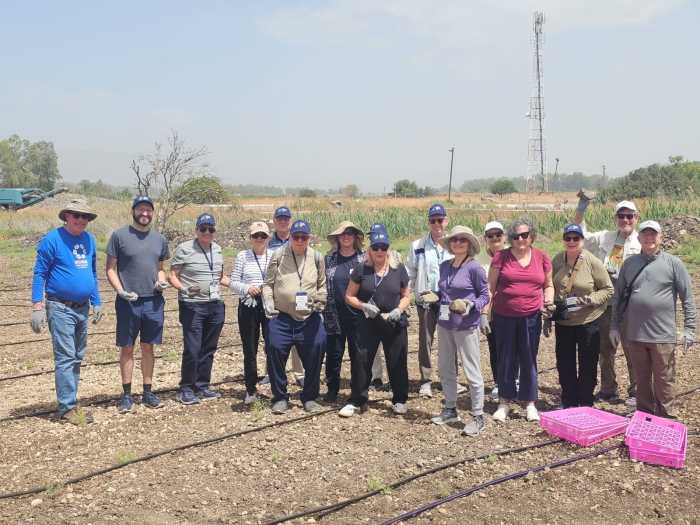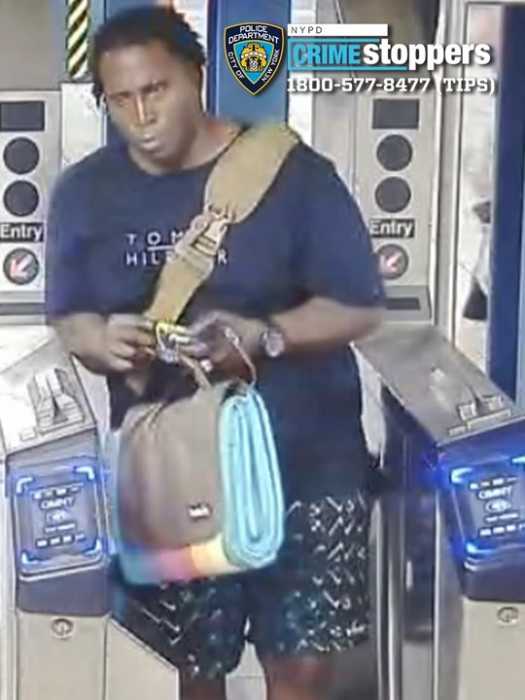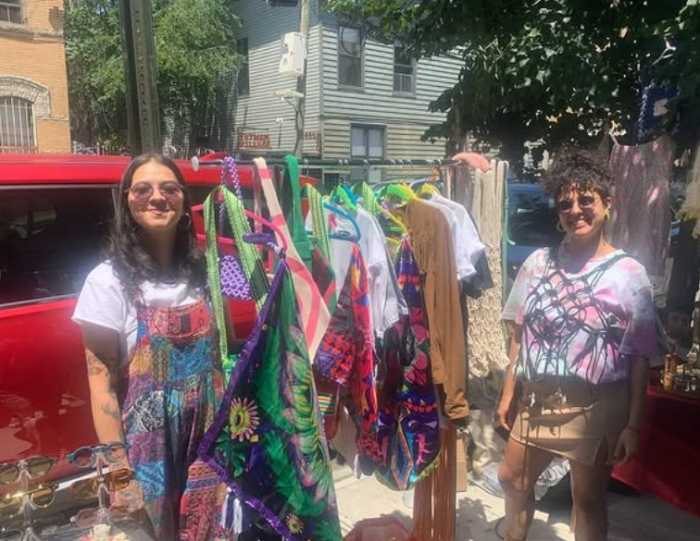BY SCOTT STIFFLER
The moment in life when we realize we’ve become our parents is as shocking, sobering, and fork-in-the-road-decisive as the diagnosis of a potentially fatal disease.
Cancer, which sometimes asserts itself alongside other blessings and curses of heredity, doesn’t give you a choice. It does, however, give you plenty of new material to work with — especially if you happen to carry the gene for looking at tragedy and finding comedy.
This is the case for three women whose breast cancer wasn’t much of a joke at first, but ended up being something they, and plenty of others, have found themselves laughing at.
AMY MARCS (thepi
Ever since those first stirrings at her sixth grade birthday party, after retreating to the basement laundry room with a fumbling Larry Stomba for seven minutes in Spin the Bottle heaven, “I was always the girl who had the great boobs,” says Amy Marcs.
No, they’re not hers — and yes, they’re spectacular. Amy Marcs’ “Nice T!ts” plays at The People’s Improv Theater at 123 East 24th St. Oct. 8, 11, 25 and 29.
Many years and a double mastectomy later, Marcs’ solo show “Nice T!ts” is an alternately introspective and crass, frequently absurd and occasionally surreal look at how medical consultations, surgeries, cancer support groups and conversations with Barbie by Mattel changed her “perceptions of femininity, womanhood, confidence, and mortality.”
“This whole ordeal,” explains Marcs in her show, “began when I was diagnosed with DCIS [ductal carcinoma in situ] in my left breast [a non-invasive breast cancer]. It doesn’t spread beyond the milk ducts. Some doctors consider it to be pre-cancer, and some doctors consider it to be cancer. I just wish they’d make up their f***ing minds. It’s like telling someone, ‘Congratulations, you’re half pregnant.’ ”
Nine months after her second lumpectomy, Marcs was told there was cancer in the other breast.
“I have a family history of this disease. My mother died from it at fifty-one,” she says, noting that with her own breast cancer diagnosis came “an unbelievable gut instinct that I had the emotional strength to go through this — because if I could survive losing my mother at seventeen, I could pretty much survive anything.” The ability to assess, accept and persevere, Marcs notes, “was already in me.”
In the show, she recalls thinking, “As much as I love my perfect perky breasts, and many others have loved my perfect perky breasts, going all the way back to Larry Stomba, they are not worth my life. They must go!”
In 2009, Marcs underwent a double mastectomy, skillfully performed by Dr. Karen Hiotis (of the NYU Cancer Center), with reconstruction to be handled by “my Michelangelo,” plastic surgeon Dr. Nolan Karp.
In an ironic moment during the consultation phase with Dr. Karp (who, she notes, is rather easy on the eyes), Marcs discovered her “quest to find the perfect set of boobs” would be complicated by another aspect of her physical self.
“He explains a procedure called DIEP [Deep Inferior Epigastric Artery Perforator] Flap Reconstruction and another called TRAM [Transverse Rectus Abdominus Myocutaneous] Flap Reconstruction,” says Marcs in the show, “where they take the fat from either your stomach or your back, and make your new breasts out of that. Apparently I am not a candidate for either one, because I don’t have enough fat. This is the first and only time in my life I’m upset that I’m too thin. ‘Can’t I gain some weight and then come back?,’ I ask. But Karp quickly replies that it doesn’t work that way.”
Tissue expanders followed by implants were her only option — leading her on a Google binge wherein she weighed the relative merits of saline or silicone.
It’s here, in the self-styled learning process, that Marcs’ “reconstructive comedy” began to emerge, as a way to use “the topical container of a breast cancer diagnosis to talk about the resiliency of the human spirit. When we’re put to the fire, we have so much more strength than we think we have. I never set out to be funny [about cancer], but for me, humor always makes it comfortable to talk about something.”
After performances or while sharing her story elsewhere, Marcs says it’s not uncommon to encounter “people who say, ‘Oh, I could never do that.’ Because they haven’t had to. But I’d hope they see my show and think, ‘Oh, I guess I can go through a lot more than I think I can.’ It’s a huge thing for a woman to lose her breasts, and [so often, so many] people don’t talk about it. I want them to know they’re still vibrant, beautiful, and sexy.”
“Nice T!its” plays at 8 p.m. on Thurs., Oct. 8 & 29 and at 4 p.m. on Sun., Oct. 11 & 25 at The PIT (123 E. 24 St. off Park Ave.). For tickets ($15), visit thepi
DEB CASTELLANO (debsb
“Breast cancer was easy,” Deb Castellano tells audiences. “Relationships are hard. That is my disease. That is where my healing is needed.”
Bogged down by a series of interpersonal challenges and rigorous fertility treatments, Castellano found herself, solo, in her bedroom — belting out sad karaoke songs, then screaming into a pillow at night so as not to disturb the neighbors. But the garbage bag she’d occasionally slip into as an idiosyncratic coping mechanism ended up functioning more as a chrysalis than a place of retreat.
In one of many transformational moments that occur in “Swamp Girl” and its sequel, Castellano notes that although the fear of dying alone was driving much of her behavior, she was also in possession of a core strength that allowed her to “undergo five cancer surgeries…give myself three hundred injections in the belly with fertility drugs…hoist myself up a twelve-foot pole, flip upside-down and hang there with no hands, sing a song that brings me to tears in front of two hundred people, scuba dive with sharks…and sit on a meditation cushion without moving from 4:30 in the morning until 10:30 at night for five days at a Zen Buddhist monastery.”
Like that realization, those achievements (and the show they spawned) didn’t happen overnight, or according to plan. Castellano, who grew up in Southern California’s Orange County, was a television writer in LA before moving to NYC 15 years ago.
At the age of 41, while working in advertising and writing short plays, she “decided to get pregnant using an anonymous sperm donor.”
Three months after a miscarriage, she was preparing for another round of fertility treatments, when “I was at my weekly meditation class, changing in the bathroom, which was dimly lit with a candle.”
In the mirror, Castellano noticed a shadow next to her left nipple, and felt a small lump, “like a corn kernel. I saw my GP [general practitioner], and she gave me the number of a breast surgeon. A needle biopsy showed it was a papillomatosis, which has a 15 percent chance of being related to breast cancer.” Upon accepting the recommendation of a lumpectomy and returning for a follow-up, she discovered it was DCIS.
“I had just come off of a year and a half of solo fertility treatments, giving myself hundreds of injections, and then a miscarriage at eight weeks, which is the worst thing I’d ever been through at that point. Then, to get the [breast cancer] diagnosis three months later? It was like, ‘BAM! BAM!’ ”
After that, Castellano says, “I never went to a doctor’s appointment alone, even for my follow-ups. That was the good news, realizing that I had tons of support and loads of friends. My brother flew out [from California] for two of my surgeries, and my mom came for one of them, too.
“From there, I had another lumpectomy, but they still didn’t get clear margins. Then in January [2008], I got new health insurance that included Sloan Kettering, so I switched to them.” Her previous surgeon, and the new one, both said a mastectomy of the left breast was the best option.
Ten days after she had the unilateral mastectomy, Castellano enrolled in a women’s course “about finding your pleasure and being in your femininity. It helped me love my body, which I desperately needed.”
Around this time, she recalls, “I had a very short relationship which ended abruptly — and I tanked. That’s when I wound up in this emotional ‘swamp.’ I thought, ‘I have to do something that connects me with me, that heals me.’ ”
She’d started taking singing lessons while undergoing fertility treatments, discovering her literal voice; now it was time to hone the figurative one. She enrolled in a solo performance class, which led to the “Swamp Girl” productions (as well as “Waste Management: The Show,” a comedic work-in-progress about environmental responsibility). For a writer whose career thus far focused on putting words in the mouths of others, Castellano was reluctant not only to put herself out there on the stage, but also to reveal the emotional and physical turmoil that she was still in the process of overcoming.
It was her solo show instructor, Matt Hoverman, who convinced Castellano to take a mission-oriented view of comedy performance.
“One of the things he told me when I wrote ‘Swamp Girl,’ ” she recalls, “was, ‘You are being of service. You’ll be helping anybody who’s been through this — or anything difficult.’ Ultimately it is a show about overcoming adversity and grief — and doing it with humor…and sexiness.”
Looking back on her experiences (and having “accepted that I am not going to have a biological child”), Castellano says she “would have never become a performer if it weren’t for the one-two punch of a miscarriage and breast cancer in the same year. It’s certainly not the life I chose, but how many people can say they’ve gotten onstage to strip out of a garbage bag to AC/DC, sing ‘Somewhere Over the Rainbow’ into a hairbrush, and recite an ode to their breasts?”
CAITLIN BRODNICK (caitl
“Eight weeks after my double mastectomy, and I think I’m ready to be funny again” — and with that, Caitlin Brodnick puts her own time stamp on the utilitarian comeback “Too Soon?,” which has served many a comedian after making a biting, if not textbook respectful, observation about a fresh tragedy.
That “eight weeks” quote is an episode title from “Screw You Cancer” — Brodnick’s wry, wrenching, and obsessively informative docu-series on Glamo
“It was terrifying. I didn’t want to be a part of this,” says Brodnick — not of baring her soul on the World Wide Web, but of confronting what she long felt was her genetic destiny.
Her father — the only member of his family to survive after cancer took the others — learned of the test for BRCA-1 [the genetic mutation that provides instructions for making a protein that acts as a tumor suppressor] a decade before Brodnick would finally take it, only to be told she had a mutation that put her at high risk.
“I ran from it for years,” she recalls. “When he [my father] found out about this gene, I did not want to get tested because I knew I had it. Technically, everyone has the gene, but I’m Ashkenazi (a sect of Jewish ancestry), and that gives us a higher risk. I have a sister who’s younger, and she’s negative for the gene. I didn’t get tested until 2010, and it was just devastating when I got the news that I was positive. My father’s sister died at thirty-two of cancer, which we believe started at twenty-seven. So I was always very afraid of cancer growing up, anxious and nervous. I felt that cancer was around the corner, ready to come and get me.”
Testing positive became a surprisingly effective facilitator for confronting a number of other issues. “I’ve always had a tumultuous relationship with my breasts,” Brodnick says. “I thought they were too large for my body. I didn’t like how sexualized they made me. They’re 32G, as in ‘Go.’ It was very hard for my five-foot-one frame.”
Although she won’t make the claim on her own, one gets the sense from watching “Screw You Cancer” that alongside other less desirable aspects of genetic predisposition, Brodnick was born with self-awareness and the ability to take decisive action.
“I realized,” she said on weighing the option of preventative surgery, “that I was [and had been] very angry at my body. I actually fantasized about being in my forties and fifties — the time they typically recommend you have the surgery. I saw myself having children, breastfeeding them, and then getting the surgery. But I was not living a happy life, waiting to be fifty years old.”
She also came to realize that, early on in her marriage, “I was subconsciously pushing my husband and I to have children, because I wanted to get breastfeeding over with. That’s when I brought the idea [of breastfeeding our future children] to my husband, and he said he didn’t care, because he hadn’t been breastfed. I realized, I never even asked him, and you know, although it’s very trendy now. We didn’t care at all about breastfeeding.
“That was a turning point for me. I knew deep in my heart that I wanted this surgery.”
Now 31, Brodnick says she is “very happy with my decision. I have a lightness about my future that I’d only hoped for.” After reconstructive surgery, “I feel more free, in a lot of ways. I love my breasts. It’s lighter, to have less [breast] tissue, and it’s mentally freeing not to have to go to these intense screenings every six months. I have physically redesigned my body, and it feels very powerful.”
But besides children, there’s one thing Brodnick still doesn’t have: nipples. “It’s such a funny topic,” she says with assertive glee. “I go to my doctor’s office and they pull out this enormous catalog. I’ve become a nipple pervert, in the sense that I can’t stop shopping, by staring at other women’s nipples!”
For her doctor, she notes, “It’s like finishing the art project, like she has one last piece to do.” Brodnick does find herself experiencing flashes of self-consciousness while changing in front of family or friends, “but it quickly goes away. So I haven’t made the full decision, so what? I’m browsing. You pick your size, color, and areola. You can also tattoo with a 3D effect. For me, I want that tactile feeling.”
But that may not be important to others. “In the beginning,” Brodnick recalls, “my husband was very delicate. It was like the elephant in the room, but on my chest. I even found myself asking him, ‘Is this sexy or weird?’ But he doesn’t care if I have nipples. He says he’s used to the way my boobs look now, because it’s an honest depiction. Here I am, his wife, who had a double mastectomy to save her life. He really doesn’t require the smoke and mirrors.”
Even prior to making the decision to have the surgery (then putting off children, nipples), Brodnick was making appearances on the comedy and performance circuit, most notably with The Moth — telling true stories whose appeal stemmed more from frank assessments of everyday life than punchline-driven flights of fancy.
During that period, “I knew in the back of my mind I was going to talk about this [the surgery]. It’s such a scary thing. When I went online, I didn’t come across anybody in my age bracket. This was when Angelina Jolie was ‘coming out’ [about her preventative double mastectomy].”
What Brodnick took away from YouTube was, “This is a really sad, difficult thing to do. I realized a lot of younger women must be put off by this very negative portrayal, and it also seemed like an older woman’s decision.”
Brodnick pitched an idea to a friend of hers who worked for Glamour: videos created by Brodnick in her home before and after doctors’ appointments. Glamour responded with an offer to make it a full documentary series.
Having a director, producer, and sound editor was a powerful form of motivation.
“There were times,” Brodnick recalls, “when all I could think about was the next step in the surgery — and if it was just me, I might not have reported those moments. But because Glamour was there, I knew I could relax and they would take care of my story. I thought, ‘This is a service I can provide. I can’t cure or prevent cancer, but I can share my experience.’ ”



































